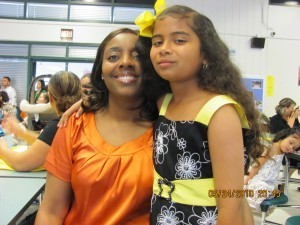Effective Communication is an Art
 As a 32 year public educator and adjunct professor the last 6 years, I often ask my students to write reflection papers. Although I give them thorough instructions, almost immediately one will ask: “What point of view do you want us to take?” I’ll answer by saying, “Take your point of view. I want to hear your stance, thoughts, and opinions on topics. You may respond using creative thoughts, artifacts, and etc. You may make your response as interesting and lively as deemed appropriate.”
As a 32 year public educator and adjunct professor the last 6 years, I often ask my students to write reflection papers. Although I give them thorough instructions, almost immediately one will ask: “What point of view do you want us to take?” I’ll answer by saying, “Take your point of view. I want to hear your stance, thoughts, and opinions on topics. You may respond using creative thoughts, artifacts, and etc. You may make your response as interesting and lively as deemed appropriate.”
I do this because I want my students, who by the way are aspiring to become Instructional Leaders in our classrooms of tomorrow, to realize that communication may have many different, but interesting facets. Too, communication is two-way. One has to listen attentively to others first, then share their thoughts on the matter at hand. Sharing and listening garners respect. Leaders must be able to role model appropriate ways to converse. If we can do this as adults, surely our children will follow.
Just long as my adult students use friendly discourse as they dialogue one to another, and respect one another’s sharing, the “sky is the limit.” One other point I stress to my students is this: You never have to subject yourselves to, or agree with another’s thoughts and opinions, but it is always kosher to agree to disagree in friendly, professional ways.
When I teach courses online, we term using politeness and good manners “netiquette.” Netiquette is merely online etiquette. Students must converse one to another exercising respect and consideration while in forum discussions. Rudeness, put downs and harshness are not communicative options. In fact, these are forms of bullying behaviors that should never be tolerated within an online community, network or forum discussions.
My students are taught this: If you can utilize another person’s point of view/information in your world, run with it. If the information doesn’t fit your expectations and/or character, leave it. Perhaps someone can/will benefit from the information. Just because YOU think it’s not worthy, doesn’t mean that someone else feels the same way.
Responding negatively using “put downs” criticism is a no-no. Effective communication is an art, and it takes maturity.
As a professor I feel that I owe this training to my students. I instill such tactics within them because they’ll be a part of many different administrative teams as they share their expertise and knowledge.
I also take this idea seriously as I join and become a part of forum discussions. I love sharing and learning from others. As educators, adults, parents, authors, and community leaders we must role model effective communication. We’d surely want our children to communicate well in classrooms and abroad.
Remember, it’s okay to disagree with another’s point of view, but try to understand them before “tuning them out.” Give what they have to say a “fighting chance.”
Suggestions of how to use phrases as a Segway to better understand another’s Thoughts/Points of Views:
Probe further by stating/asking:
“You said ….. Would you explain what you were referring to?” (Be sure to use direct quotes. Never make false accusations, put words in someone’s mouth, or summarize what you think they said in your own words).
Here is my take on your opinion….
Once upon a time I….
From my experience on the subject……
I read an article once that suggested….
Did you know that recent statistics reveal …..?
Sounds interesting. Here’s my stance on the topic…..
I don’t exactly agree with your thought on this subject, but can we agree to disagree? Here’s why….
Have you ever thought about it this way?
Finally, effective communication takes skill. If you are ever a part of group/forum discussions and your opinions/thoughts aren’t being acknowledged, or if the group’s moderator is insensitive, lack the skills, professionalism and maturity needed to facilitate appropriately, kindly bow out and attach yourself to groups that are uplifting, empowering, and those making stark differences in the lives of others. There are several such groups out there and your voice counts. Who knows, what you have to offer could make a positive difference in someone’s life.
Featured Photo – Author, Cande C. Richardson – “Healing Prayer Workbook: A Journey from Illness to Healing” & Illustrator, Kelly A. Vasquez “Guess What? Dear Diary”
Photo Courtesy of: Dr. Cherrye S. Vasquez
Cherrye S. Vasquez's Blog
- Cherrye S. Vasquez's profile
- 37 followers



